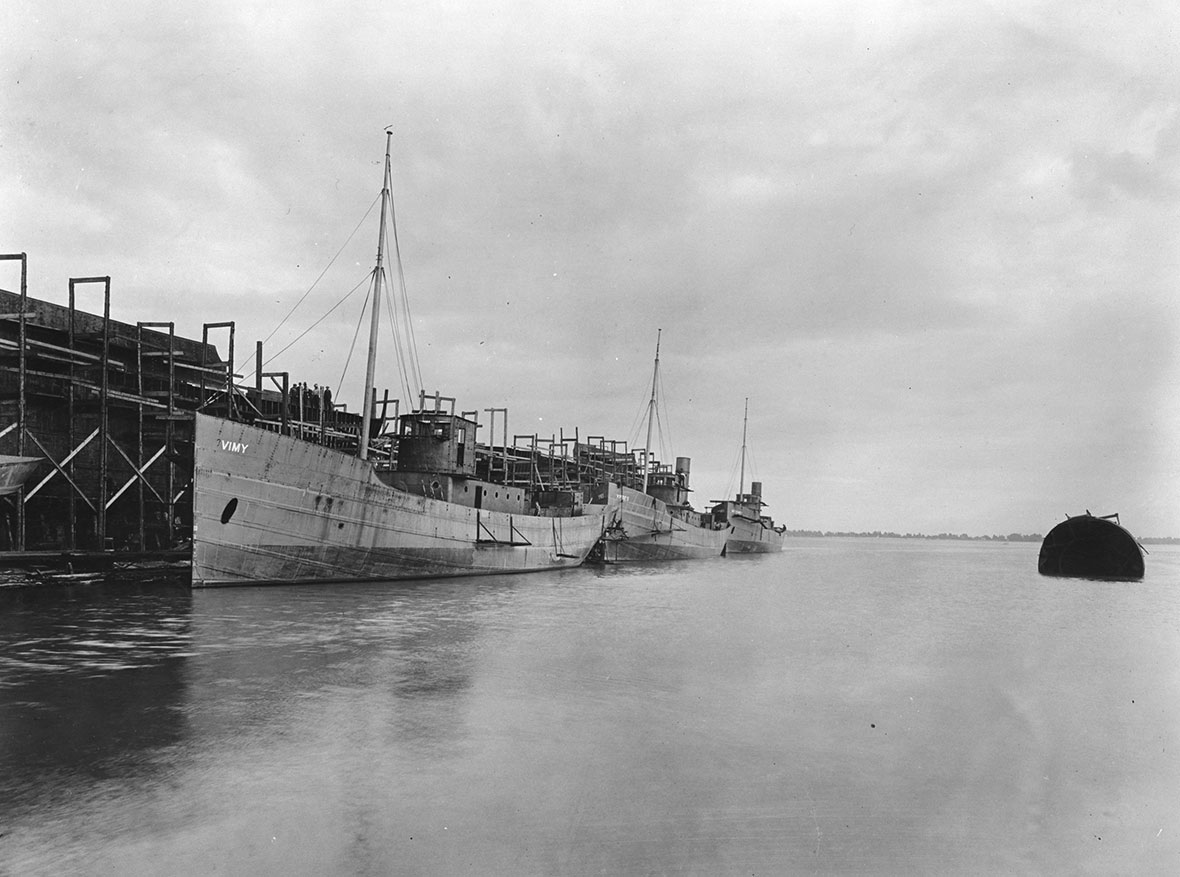HMCS Messines
There has been only one vessel named HMCS Messines in the Royal Canadian Navy.
HMCS Messines / Battle-class trawler
The Battle-class trawlers were built during the closing days of First World War. Based on the British Castle-class trawlers, these ships were of slightly larger tonnage than the British ships, and it was the first class with a distinct Canadian designation. All 12 vessels of the class received names for land battles of the First World War in which components of the Canadian Army took part. Many of these vessels also served in the Second World War but five of them exchanged their name for numbers in 1942.
HMCS Messines is named for actions taken at Messines during the Battle of St. Eloi (27 March- 16 April 1916, also known as the Battle of St. Eloi Craters). This battle on the fields in Belgium was the first major engagement for the 2nd Canadian Division. The plan called for British troops to take the German front line and for the Canadians to then hold it. Early in the morning of March 27, six British mines collapsed the German trenches creating huge craters in the battlefield. The mines changed the battlefield so much that, along with the high winds, sleet and mud, the British troops became disoriented. They would not be relieved by the Canadians until 4 April. The confusing conditions, days of heavy rain, and enemy fire and artillery pinned the Canadians down and prevented effective communication from the front lines.
The Canadians would stay in contact with the enemy for two weeks, until aerial photography demonstrated to divisional headquarters the awful position of the Canadians, and the battle was stopped. German night raids and tear gas attacks forced half the remaining Canadians to surrender, while the rest managed to escape. In total, the Canadians saw 1370 casualties over the course of the battle. The German position remained unchanged from where it had been at the start of the battle.
The Battle-class trawler Messines was launched at Toronto, Ontario, on 16 June 1917 along with three of her sisters: St.Julien, Vimy and Ypres, Messines was commissioned that November, assuming local patrol and convoy escorts from Halifax, NS. She was in port on 6 December 1917 while the Halifax explosion occurred but no report of damage could be found. In 1920, she was paid off and handed over to the Department of Marine and Fisheries to become a lightship. Eventually designated Lightship No. 3, she was scrapped in 1962.
- Builder: Polson Ironworks, Toronto, Ontario
- Date launched: 16 June 1917
- Date commissioned: 13 November 1917
- Date paid off: [?] 1920
- Displacement: 325 tonnes
- Dimensions: 45.1 m x 7.2 m x 4.1 m
- Speed: 10 knots
- Crew: 18
- Armament: one 12-pounder (5.45 kg) gun
